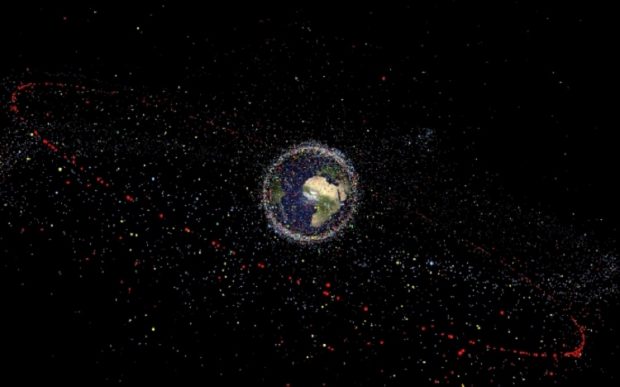
New laser-based system to accurately spot space junk
PTI, Dec 25, 2019, 4:47 PM IST

Beijing: Researchers in China have improved the accuracy of detecting space junk in the Earth’s orbit, providing a more effective way to plot safe routes for spacecraft maneuvers.
Scientists have developed space junk identification systems, however, it has proven tricky to pinpoint the swift, small specks of space litter.
A unique set of algorithms for laser ranging telescopes, described in the Journal of Laser Applications, has significantly improved the success rate of space debris detection.
“After improving the pointing accuracy of the telescope through a neural network, space debris with a cross sectional area of one metre squared and a distance of 1,500 kilometers can be detected,” said Tianming Ma, from the Chinese Academy of Surveying and Mapping, and Liaoning Technical University.
Laser ranging technology uses laser reflection from objects to measure their distance. However, the echo signal reflected from the surface of space debris is very weak, reducing the accuracy.
Previous methods improved laser ranging pinpointing of debris but only to a one kilometer level.
Application of neural networks algorithms modeled on the human brain’s sensory inputs, processing and output levels to laser ranging technologies has been proposed previously.
The new study is the first time a neural network has significantly improved the pointing accuracy of a laser-ranging telescope.
Ma and colleagues trained a back propagation neural network to recognise space debris using two correcting algorithms.
The Genetic Algorithm and Levenberg-Marquardt optimised the neural network’s thresholds for recognition of space debris, ensuring the network was not too sensitive and could be trained on localised areas of space.
The team demonstrated the improved accuracy by testing against three traditional methods at the Beijing Fangshen laser range telescope station.
The observation data of 95 stars was used to solve the algorithm coefficients from each method, and the accuracy of detecting 22 other stars was assessed.
The new pointing correction algorithms proved the most accurate, as well as easy to operate with good real-time performance.
“Obtaining the precise orbit of space debris can provide effective help for the safe operation of spacecraft in orbit,” Ma said.
Udayavani is now on Telegram. Click here to join our channel and stay updated with the latest news.
Top News

Related Articles More

Rapid digital expansion to create over 1 lakh new jobs in fiber tech in India in next 5 years

National Consumer Helpline to roll out AI-based features, partners with 1,000 firms

BTS2024: If India can make rocket sensors, it can also make car sensors, says ISRO chief Somanath

World COPD Day: Know your lung function

SpaceX successfully launches ISRO’s 4,700 kg communication satellite from US
MUST WATCH
Latest Additions

Wanted to kill Ajmal Kasab who caused so much of pain, recalls 26/11 terror attack victim

Two retired revenue officials among four arrested in land grabbing case in Jammu

Kerala govt to revise manual for junior doctors, house surgeons

State can interfere with religious practices if they impede development, equality rights: SC

Four cheers at MP’s Kuno park; cheetah Neerva gives birth to cub quartet
Thanks for visiting Udayavani
You seem to have an Ad Blocker on.
To continue reading, please turn it off or whitelist Udayavani.


















